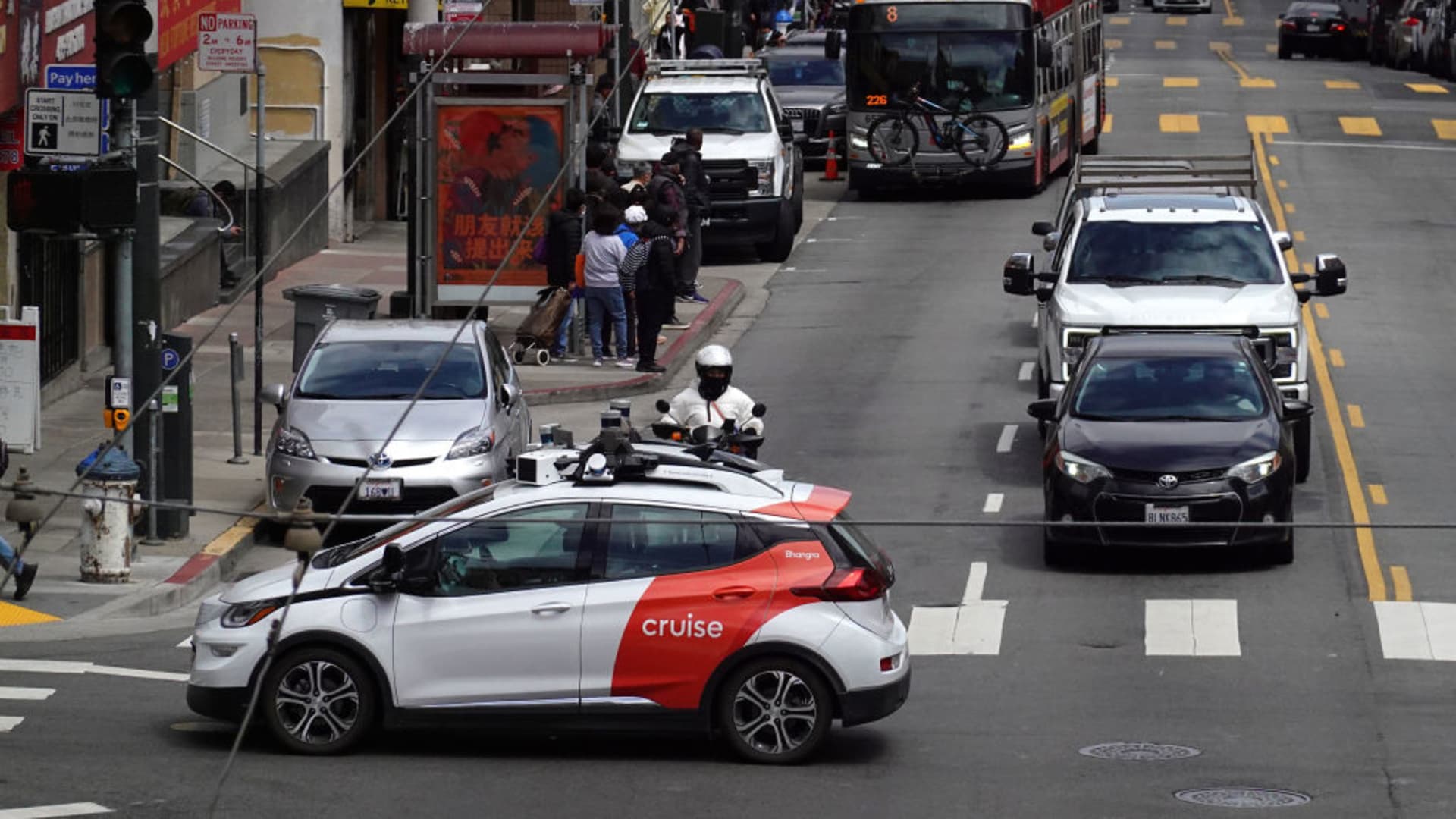
On Thursday, California regulators voted to approve round-the-clock robotaxi service in San Francisco from two rival companies: Waymo and Cruise. By Friday night, a group of Cruise vehicles had stopped short in the city’s North Beach neighborhood, flashing hazard lights and causing a traffic backup, according to reports.
The service expansion, approved in a 3 to 1 vote by California’s Public Utilities Commission, made San Francisco the first major U.S. city to allow two robotaxi companies to compete for service “at all hours of day or night.” It allows Waymo, owned by Google parent-company Alphabet, and Cruise, owned by General Motors, to expand their fleets as needed and charge for fares at any time of day.
But on Friday night at about 11 p.m., pedestrians reported spotting as many as 10 of Cruise’s driverless cars stopped on and around Vallejo Street in North Beach, trapping human-driven vehicles for at least 15 minutes, according to reports. The company cited cell phone service issues related to a nearby music festival, which it said hampered its ability to route the vehicles.
Cruise did not respond to a request for comment.
The weekend traffic jam followed strong opposition to the regulators’ decision from some groups, including San Francisco’s police and fire departments. In a hearing last week, officials from the city’s fire department, police department and municipal transportation agency prepared a report of at least 600 incidents with driverless vehicles since June 2022, including unpredictable operations near an emergency response zone, obstructing travel to an emergency, contact or near misses with personnel or equipment and more.
Before Thursday’s vote, both Waymo and Cruise were limited in their ability to operate in San Francisco. In Cruise’s case, if there wasn’t a safety driver present in the vehicle, it could offer fared service in certain areas from 10 p.m. to 6 a.m. If the rides were free, it could offer that service at any time. If the vehicle did have a safety driver, then the company could charge for fares around-the-clock.
In Waymo’s case, before regulators’ decision, the company could not charge fares for ride-hailing at any time if there wasn’t a safety driver. But if a safety driver was present in the car, then the company could charge passengers for rides at any time.
Waymo said it had more than 100,000 signups on a waitlist for service, and in a statement Friday, Tekedra Mawakana, co-CEO of the company, said that the service expansion “marks the true beginning of our commercial operations in San Francisco.”
Waymo declined to share the weekend’s ride-hailing numbers with CNBC, or comment on whether the Cruise traffic jam impacts its operations plans moving forward. But Chris Ludwick, the company’s product management director, told CNBC in a statement that the company is seeing “incredibly high demand” for its service.
“We’ve always taken an incremental approach to deploying our technology and will continue to expand our service and fleet in SF gradually, with safety and the needs of local communities in mind,” Ludwick added.
In a July 25 earnings call, Cruise CEO Kyle Vogt discussed plans to “blanket a city like San Francisco” with Cruise vehicles, saying the company would need to ramp up manufacturing if it did so, and expressed potential plans to introduce several thousand robotaxis in the area.
“There’s over 10,000 human ride-hail drivers in San Francisco, potentially much more than that, depending on how you count it,” Vogt said on the call. “Those drivers, of course, aren’t working 20 hours a day like a robotaxi could. So it does not make a very high number to generate significant revenue in a city like San Francisco. But certainly, there’s capacity to absorb several thousand per city at minimum.”
